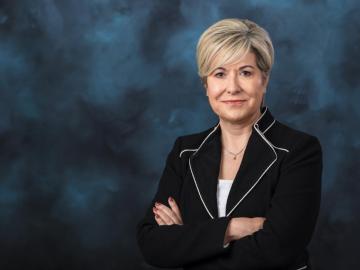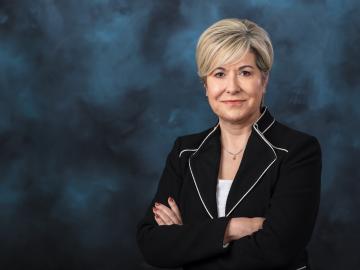
Filter News
Area of Research
- Advanced Manufacturing (2)
- Biology and Environment (19)
- Computational Engineering (1)
- Computer Science (3)
- Energy Frontier Research Centers (1)
- Energy Science (32)
- Fusion and Fission (4)
- Isotopes (15)
- Materials (37)
- Materials for Computing (4)
- National Security (16)
- Neutron Science (12)
- Nuclear Science and Technology (3)
- Quantum information Science (1)
- Supercomputing (48)
News Type
News Topics
- (-) Artificial Intelligence (44)
- (-) Clean Water (9)
- (-) Computer Science (77)
- (-) Exascale Computing (16)
- (-) Fossil Energy (1)
- (-) Grid (23)
- (-) Isotopes (33)
- (-) Nanotechnology (35)
- 3-D Printing/Advanced Manufacturing (61)
- Advanced Reactors (14)
- Big Data (20)
- Bioenergy (48)
- Biology (53)
- Biomedical (30)
- Biotechnology (17)
- Buildings (25)
- Chemical Sciences (44)
- Composites (15)
- Coronavirus (23)
- Critical Materials (13)
- Cybersecurity (23)
- Education (3)
- Element Discovery (1)
- Energy Storage (56)
- Environment (78)
- Frontier (19)
- Fusion (26)
- High-Performance Computing (43)
- Hydropower (2)
- ITER (3)
- Machine Learning (23)
- Materials (69)
- Materials Science (71)
- Mathematics (5)
- Mercury (6)
- Microelectronics (1)
- Microscopy (28)
- Molten Salt (3)
- National Security (35)
- Neutron Science (64)
- Nuclear Energy (44)
- Partnerships (33)
- Physics (42)
- Polymers (18)
- Quantum Computing (14)
- Quantum Science (36)
- Security (19)
- Simulation (18)
- Space Exploration (3)
- Statistics (1)
- Summit (24)
- Transportation (38)
Media Contacts

Pablo Moriano, a research scientist in the Computer Science and Mathematics Division at ORNL, was selected as a member of the 2024 Class of MGB-SIAM Early Career Fellows.

Gina Tourassi, associate laboratory director for computing and computational sciences at the US Department of Energy’s (DOE’s) Oak Ridge National Laboratory, has been named a fellow of the Institute of Electrical and Electronics Engineers, the world’s largest organization for technical professionals.

Louise Stevenson uses her expertise as an environmental toxicologist to evaluate the effects of stressors such as chemicals and other contaminants on aquatic systems.
A team from DOE’s Oak Ridge, Los Alamos and Sandia National Laboratories has developed a new solver algorithm that reduces the total run time of the Model for Prediction Across Scales-Ocean, or MPAS-Ocean, E3SM’s ocean circulation model, by 45%.



Effective Dec. 4, Gina Tourassi will assume responsibilities as associate laboratory director for the Computing and Computational Sciences Directorate at the Department of Energy’s Oak Ridge National Laboratory.

ORNL is home to the world's fastest exascale supercomputer, Frontier, which was built in part to facilitate energy-efficient and scalable AI-based algorithms and simulations.

ORNL has joined a global consortium of scientists from federal laboratories, research institutes, academia and industry to address the challenges of building large-scale artificial intelligence systems and advancing trustworthy and reliable AI for

The Department of Energy’s Office of Science has allocated supercomputer access to a record-breaking 75 computational science projects for 2024 through its Innovative and Novel Computational Impact on Theory and Experiment, or INCITE, program. DOE is awarding 60% of the available time on the leadership-class supercomputers at DOE’s Argonne and Oak Ridge National Laboratories to accelerate discovery and innovation.


